|
|
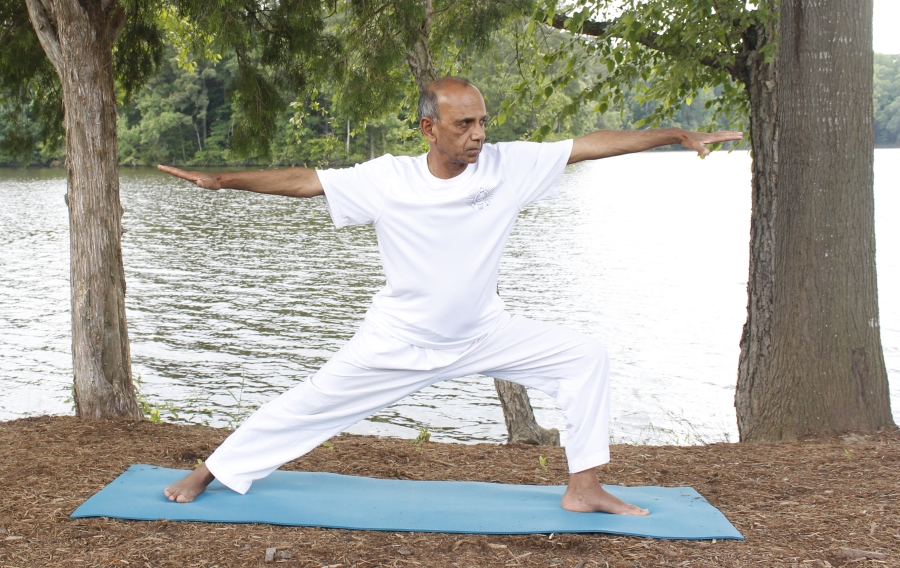 Virabhadrasana (Warrior2)
I am pleased to announce the next 21-day Yoga Immersion program. The past programs have been very well received by all the participants. For most of them, it has been truly a life-transforming experience. I invite you to join me on this exciting and deeply rewarding 21-day yoga journey. Here are the particulars:
- What: 21-day yoga immersion
- When: Saturday, June 10 – Friday, June 30, 2017
- Time: 6:00 AM – 7:30 AM
- Where: 4000 Bear Cat Way, Suite 102, Morrisville, NC 27560
- Fee: $125 (cash, check or paypal)
Continue reading »
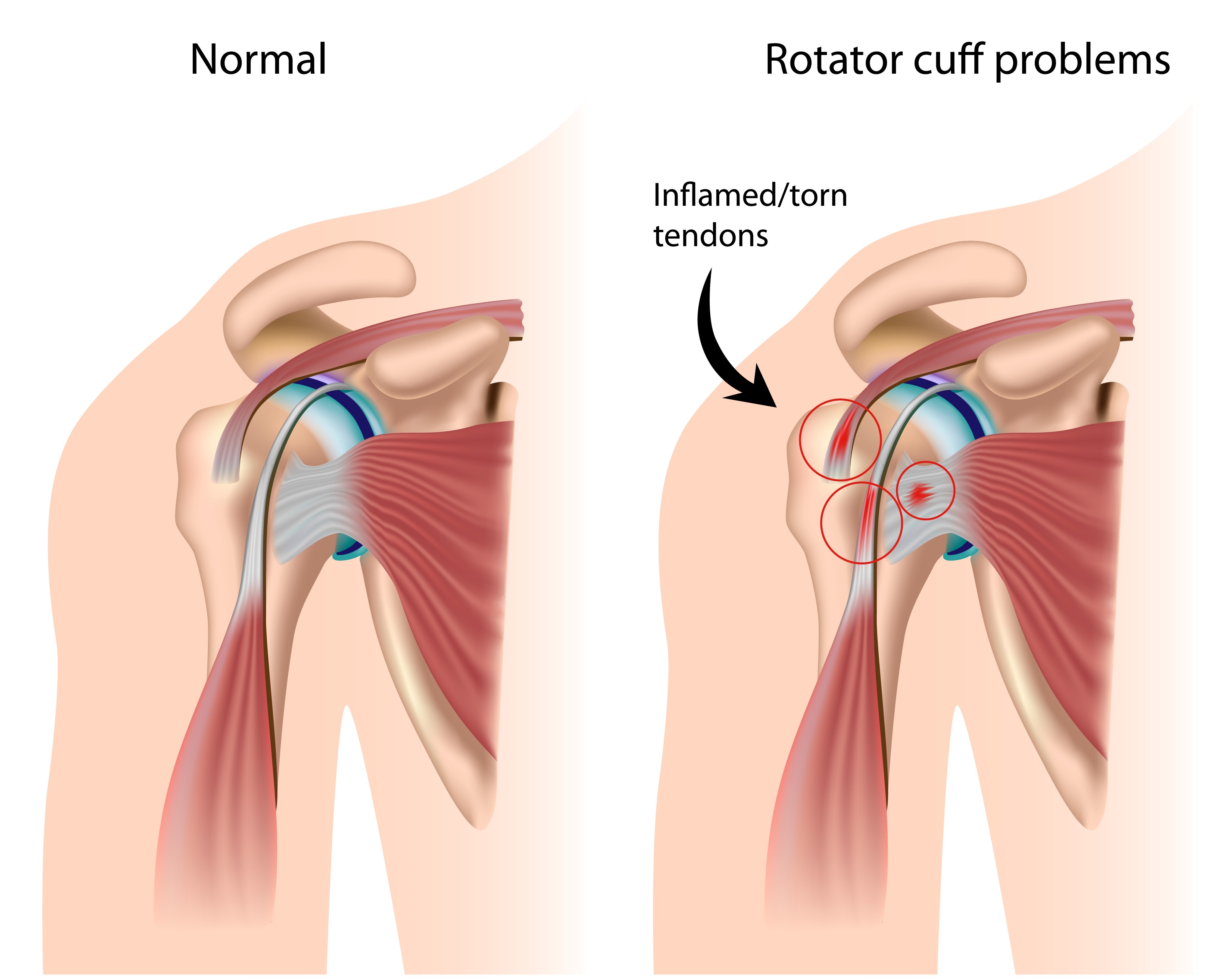 Rotator Cuff tear
As I mentioned in my previous shoulder update, I had surgery on my right shoulder on January 5, 2017 to fix a tear in the rotator cuff. If you recall, I had the same kind of surgery on the same shoulder in 2013. However, the cuff got torn again only a few months after the surgery. At that point I had decided to live with the torn rotator cuff as my pain was minimal. Moreover, I developed enough of the adjoining muscles to be able to do more than 65-70% of my yoga moves.
It was toward the end of 2016 that I suddenly developed a sharp and fairly persistent pain in my right shoulder. That pain, for a reason that I cannot explain, gradually began to increase and became quite intolerable. That is when I decided to again search for a surgeon who can help me in the situation. Finally I talked to a surgeon at Duke who said that she would be able to use a fairly recent treatment option that could fix the shoulder. So, I decided to have another surgery, which would be the third on the same shoulder.
Continue reading »
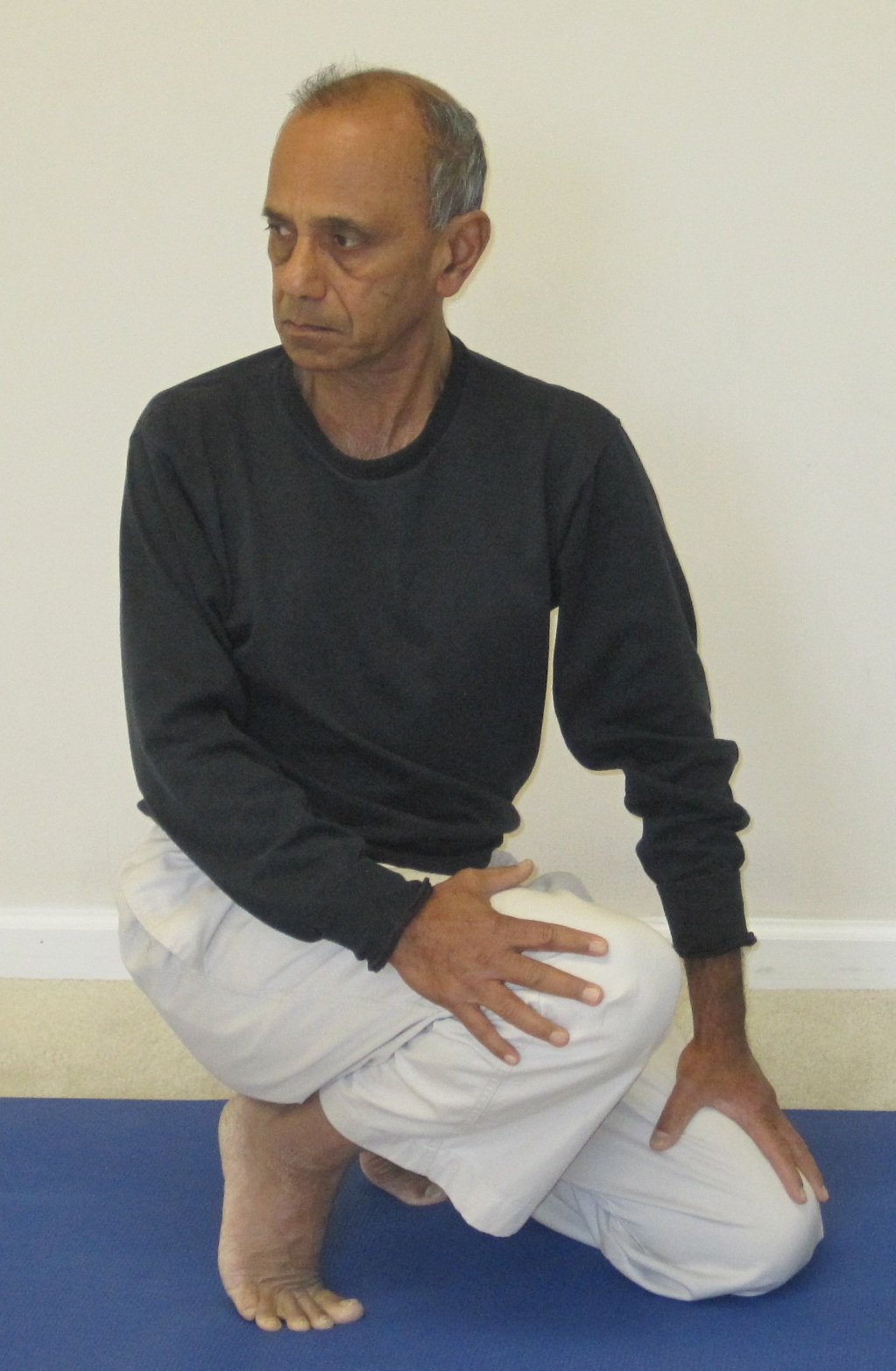 Udarakarshanasana
In the classical yoga text, the Hatha Yoga Pradipika, six cleansing techniques, called Shat-karma, are described. These are:
-
Neti (nasal cleansing)
-
Basti (like an enema)
-
Dhauti (alimentary canal cleansing)
-
Trataka (for the eyes)
-
Kapalabhati (breathing technique for purifying the nervous system)
-
Nauli (abdominal churning)
The practice of Dhauti as given in the Hatha Yoga Pradipika is as follows (chapter 2, verse 24):
"A strip of wet cloth, four angulas wide (i.e. seven to eight centimeters) and fifteen hand spans (i.e. one and a half meters) in length is slowly swallowed and then taken out, as instructed by the guru. This is known as dhauti."
As you can see, this practice is not very easy to do as it involves swallowing a long piece of wet cloth and then taking it out. To do this technique, one needs guidance from a competent guru and a fairly long time to get comfortable with it. As such, it is not commonly practiced as the technique for internal cleansing.
Continue reading »
 Padmasana (Lotus Pose)
I am pleased to announce the next Meditation Intensive. In this program, I will discuss the basic concepts of meditation and practice several of the concentration (dharana) and meditation (dhyana) techniques. Most of the information that I will be sharing is based on the concepts discussed in Patanjali’s Yoga Sutras and related classical yoga texts.
No prior asana, pranayama or meditation experience is required.
Here are the particulars:
- What: 14-day Meditation Intensive
- When: Monday, May 1 – Sunday, May 14, 2017
- Time: 6:00 – 7:30 AM
- Location: 4000 Bearcat Way, Suite 102, Morrisville, NC 27560
- Daily Routine: Light stretching (10-15 minutes), Pranayama (15 min), Relaxation (10-15 min), Meditation – discussion and practice (45 min)
- Commitment: A firm commitment to follow this schedule and attend every day
- Fee: $90 (cash, check or paypal)
- To register: fill out the registration form, providing information in all the fields, and submit it online
Strongly recommended
- Light,’sattvic’, nutritious, VEGETARIAN food
- No alcohol, drugs, tobacco or any other item of similar nature
- A personal commitment to continue the practice after the program is over
Please visit here for more details…
Do not hesitate to contact me if you have any questions. I look forward to your participation.
 Upavishta-konasana
Upavishta Konasana – उपविष्ट-कोणासन – (Seated wide-legged forward bend) is an intermediate level pose and helps a great deal in stretching the inner thigh and inner knee muscles and the entire spine. It also brings about a sense of calm to the mind that helps relieve stress and anxiety. The word upavishta means "seated" and kona means "angle".
Instructions
Continue reading »
 Standing wide-legged bend
After my shoulder surgery on January 6, I met with my doctor four weeks after the surgery for my first post-op follow-up. At that time she told me that due to the nature of the surgery which involved the use of a human graft, the recovery is going to be quite slow. It could take up to a whole year before I gain full range of motion and strength. Of course, since using human graft is a relatively new procedure, not much data is available from actual case studies to make a good, realistic assessment of the recovery time. It is not even clear what "full recovery" means. In my doctor’s estimate I may regain full range of motion; however, I may gain only about 80-85% of my previous strength in my arms and shoulders. These follow-ups will continue every four weeks for the next few months.
My current yoga practice
Continue reading »
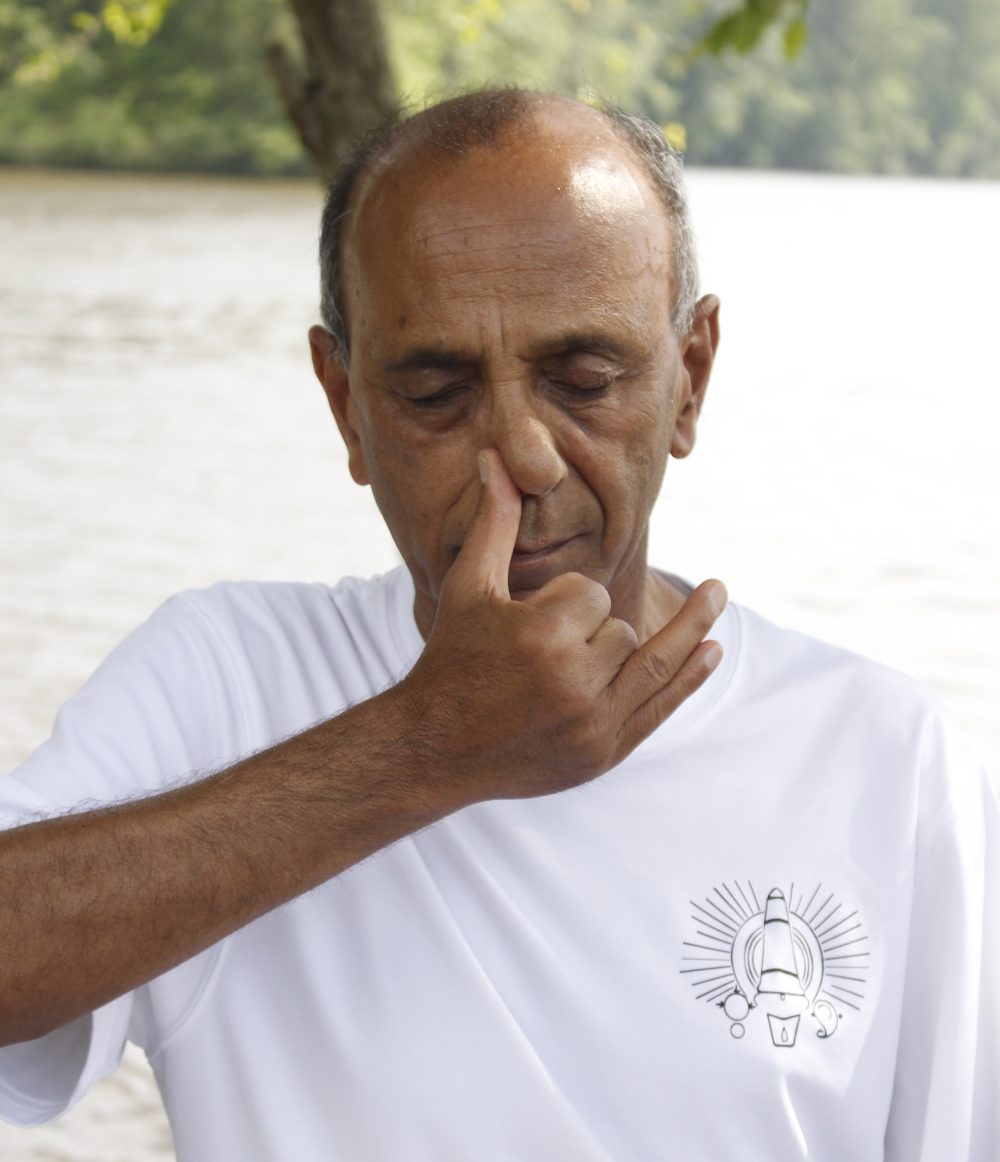 Vishnu Mudra
I am pleased to announce the next Pranayama intensive. In this program, we will be practicing some of the main pranayama techniques given in our ancient yoga texts. I will also discuss the underlying concepts in the practice of pranayama and all the wonderful benefits that the practice can bring us.
No prior pranayama or meditation experience is required.
Here are the particulars:
- What: 14-day pranayama intensive
- When: Monday, March 27 – Sunday, April 9, 2017
- Time: 6:00 – 7:30 AM
- Location: 4000 Bearcat Way, Suite 102, Morrisville, NC 27560
- Daily Routine: Light stretching (10-15 minutes), Pranayama (40 min), Relaxation (15 min), Yoga philosophy/meditation (15-20 min)
- Commitment: A firm commitment to follow this schedule and attend every day
- Fee: $90
- To register: fill out the registration form, providing information in all the fields, and submit it online
Continue reading »
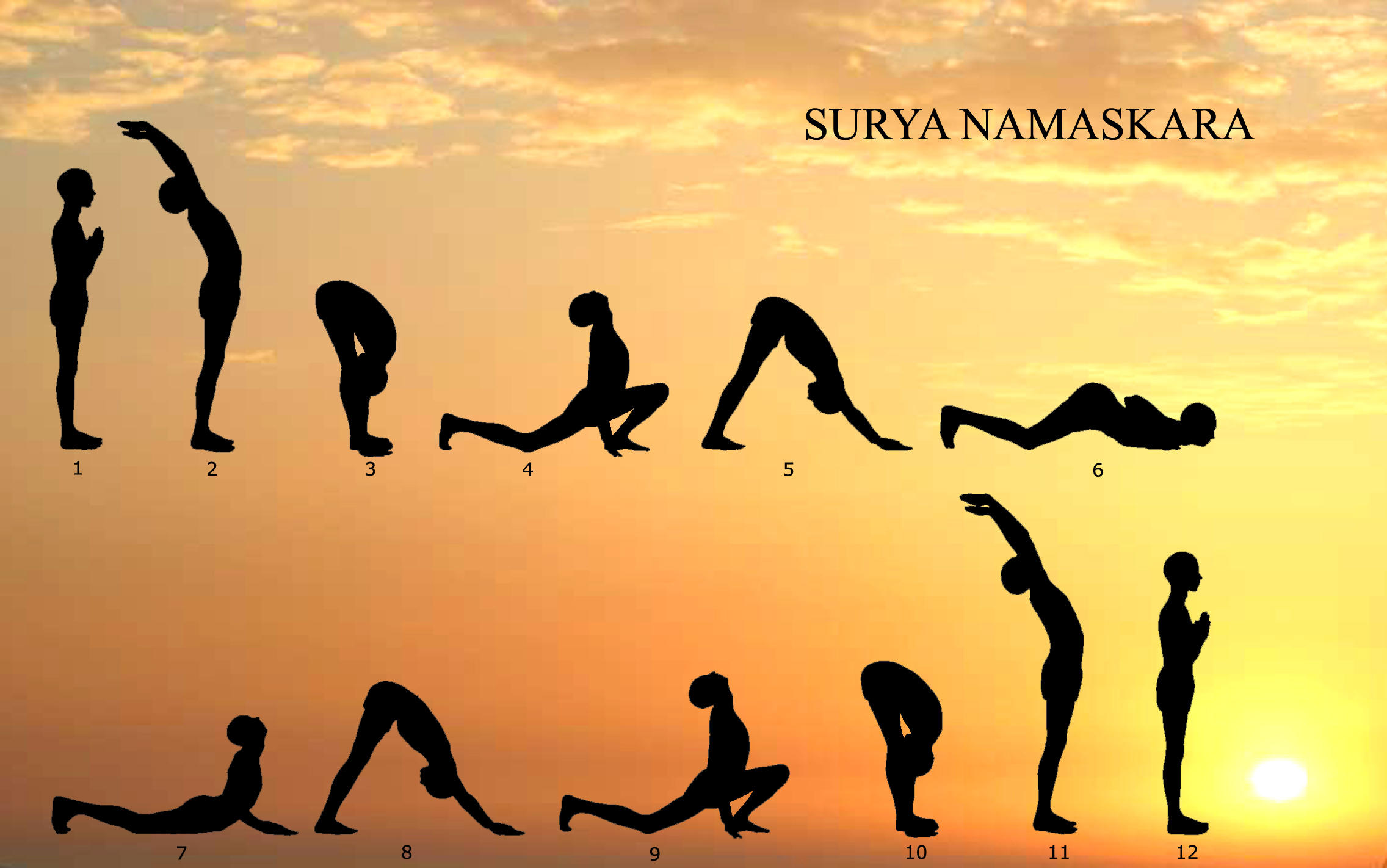 Surya Namaskar (Sun Salutation)
Surya Namaskar Yogathon (108 rounds) – Saturday, March 18, 7 – 11:30 AM!
I invite you to join us for this memorable yoga event where we will practice 108 rounds of Surya Namaskar (Sun Salutations). Surya Namaskar, practiced to the accompaniment of beautifully chanted mantras,
will not only invigorate and energize you but also lead you into a state of deep meditation.
- Event: Surya Namaskar Yogathon (108 rounds of Sun Salutations)
- Location: Hindu Temple (HSNC), main Cultural Hall, 309 Aviation Parkway, Morrisville, NC 27560; temple phone: (919) 481-2574
- When: Saturday, March 18, 2017
- Time: 7:00 AM to 11:30 AM (on-site registration starts at 6:30 AM)
- Program Fee (donation to the temple – includes veggie lunch): $20 with pre-registration or $25 on the day of the event; In addition, please try to find sponsors who might be willing to pledge money per round that you complete.
- Program: Om chanting, invocation prayer, a brief discussion of the mantras associated with SN (a chart of SN is available on my website here), practice 108 rounds of Surya Namaskar accompanied by the chanting of beautifully rendered Surya Namaskar mantras, yoga nidra (deep relaxation), brief session of pranayama to balance out the flow of prana, closing chants.
- Lunch: Vegetarian lunch will follow the event
- Light snacks, tea/coffee will be available in the hallway during the event.
- To register: please fill out the registration form on the HSNC website and submit it online. You can make the payment on the same page.
Continue reading »
In a previous article, I talked about how to make right choices in life so we can diminish or prevent future suffering. In this article I will expand a little more on the concept of suffering and discuss the various causes of suffering. We’ll turn our attention to one of the sutras from Patanjali (sutra 2.15):
परिणामतापसंस्कारदुःखैर्गुणवृत्तिविरोधाच्च दुःखमेव सर्वं विवेकिनः॥१५॥
pariṇāma tāpa saṁskāra duḥkhaiḥ guṇa-vr̥tti-virodhācca duḥkham-eva sarvaṁ vivekinaḥ ॥2.15॥
"To one of discrimination, everything is painful indeed, due to its consequences; the anxiety and fear over losing what is gained; the resulting impressions left in the mind to create renewed cravings; and the constant conflict among the three gunas, which control the mind."
What this sutra tells us is that a person with sharp discriminatory wisdom (the Sanskrit term used in the sutra is "vivekin") begins to realize that all life experiences are either actively or potentially full of suffering. When I read this sutra for the first time, it seemed a little strange to me that a person of wisdom should feel any suffering at all. After all, the purpose of all yoga practices is to attain enlightenment which will put an end to suffering. It took a little deeper reflection to understand the significance of the sutra.
Continue reading »
At every step in our life, we are presented with multiple options to choose from. The choices that we make today can have a serious impact on our future. We can be faced with simple questions like "which shirt should I wear for the party?", or whether or not I should eat this ice cream, or more serious matters like picking the right profession or career or picking the right life partner. Every option that we pick, every decision that we make, can have short-term and long-term implications.
What propels us to make inappropriate choices?
In a previous article, I wrote about how the mind functions and how we tend to be driven more by our ego rather than the pure intellect. Based on our past experiences, the ego likes to pick those choices which gave us a pleasurable experience in the past. For example, if we enjoyed a piece of cake in the past, in our memory bank it gets labeled as a "pleasant or enjoyable" experience. Next time when we are given the choice of eating a cake vs. not eating it, the ego will decide to eat the cake even though the intellect knows that it may not be good for our health. When we repeatedly make choices which are pleasant but not desirable, it can lead to much suffering in the form of disease or other physical and mental ailments. This also ties into the theory of Karma which can be summed up in this oft-heard statement, "as you sow, so shall you reap". As per this theory, our current thoughts and experiences are driven by our past actions; also, our future experiences will be driven by our present thoughts and actions.
One of the key concepts presented in the Yoga Sutras of Patanjali is how to bring about a transformation in our mind such that we are driven more by the pure intellect rather than the ego for all our thoughts and actions. Some people like to think of the ego as the "lower mind" and the intellect as the "higher mind" or the "devil" and the "angel". The idea is to sharpen the intellect enough such that it does not depend upon the ego for any decision-making. When choices in life are made with the pure intellect, then we have a better chance of avoiding future suffering.
Can suffering be avoided?
There is a very relevant sutra in Patanjali’s Yoga Sutras:
हेयं दुःखमनागतम्॥१६॥
heyaM duHkham-anaagatam
"Suffering that has not yet come is avoidable".
Suffering that happened in the past is already gone. If we are going through some suffering in the present moment, maybe we have to let it run its course. However, according to this sutra we can avoid future suffering by taking appropriate steps now. As mentioned above, suffering happens because we made some wrong choices in the past. Similarly, if we make wrong choices today, we stand to suffer the consequences in the future.
You may have heard the statement, "Pain is unavoidable but suffering is by choice". For example, if we get into an accident and break some bones, we are bound to have physical pain. But, should we allow that pain to be felt as suffering in the mind? We definitely need to take care of the injury and the pain. However, if we allow the ego to take over and start feeling helpless and miserable, we can actually delay the process of healing. We might start thinking, "Oh my God! I will have to miss several weeks of my job due to this injury. How am I going to earn money and support my family. I may even lose my job". etc. etc. This is what we can call imaginary suffering which is caused by negative thinking about a present situation and also negatively projecting imaginary consequences into the future. However, if we can stay focused on taking care of the physical pain and eliminate mental projections, we can quickly regain health and prevent suffering in the future.
There is a very famous couplet in Hindi by the Saint poet Kabir:
"दुःख में सुमिरन सब करे, सुख में करे न कोई ।
जो सुख में सुमिरन करे, तो दुःख काहे को होय ॥"
"dukha men simarana sab kare, sukha men kare na koye,
jo sukha men simarana kare to dukha kahe ko hoye"
Meaning of the couplet: Everyone remembers and prays to God when confronted with hardship or pain. When people have no pain, they do not think of Him. However, if we were to think of Him even while we are happy then there will never be a reason to be unhappy or to suffer.
For example, only when we are diagnosed with high cholesterol levels, we start thinking of changing the diet and doing some exercise. This couplet says that if we were to make the proper choice of the right diet and exercise today, we may actually prevent or delay the onset of high cholesterol and potential heart problems.
In our current state of the mind wherein the ego is more dominant, suffering is a part of life. In Buddhism, there is mention of four noble truths:
-
Dukkha (suffering): This life is full of suffering
-
Dukkha samudaya (reason for suffering): lustful cravings (trishna) lead to suffering
-
Dukkha nirodha (end of suffering): It is possible to put an end to this suffering
-
Nirodhagamini pratipad (path to freedom from dukkha): Buddha gives the eight-fold path to eliminate dukkha
In the Yoga Sutras, Patanjali has used a slightly different terminology to present an identical viewpoint:
-
Dukkha (suffering): Those with discriminatory wisdom know that all life is suffering (Sutra 2.15)
-
Heya-hetu (cause of suffering): Ignorance that causes one to identify the pure soul with the ego and intellect is the cause of suffering (Sutra 2.17, 2.24)
-
Haana (removal of dukkha): By removing this identification, dukkha can be removed (Sutra 2.25)
-
Haanopaya (technique of removal): Uninterrupted discriminative wisdom is the means of eliminating suffering (Sutra 2.26)
As you can see, while describing dukkha (suffering), there is a marked similarity between the philosophy presented by Patanjali in the Yoga Sutras and the four noble truths presented in Buddhism.
As stated earlier, we can make the appropriate choices in life by sharpening the intellect and diminishing the impact of the past impressions. It is like taking charge of our lower mind or the ego and not allowing it to lead us in the wrong direction. You can think of it as, "taking the bull by the horn"!. According to Patanjali, this goal can be achieved by practicing the eight limbs of yoga. Please visit here to learn more about the various limbs of yoga.
In a future article, I will be writing more about suffering and the underlying causes of all suffering.
|
Video DVD
Yoga with Subhash (asana and pranayama)
- Basic asana sequence (~50 min) ($18)
- Pranayama/Meditation (~35 min) ($12)
- Set of above two ($25)
Video recording of special programs offered in the past
(Links to YouTube videos will be provided)
- 21-day yoga immersion - $40
- 7-day hip opening intensive - $20
- 14-day meditation intensive - $30
- 14-day pranayama intensive - $30
- 7-day hamstring/quad intensive - $20
- 14-day Level 2 yoga intensive - $35
Payment options:
- cash, check, Zelle (use subhashmittal@gmail.com) or Venmo (use 9199269717)
- PayPal (go to bottom of page) (add $5 to the fee listed above)
Please contact me if you would like to buy.
|








Recent Comments